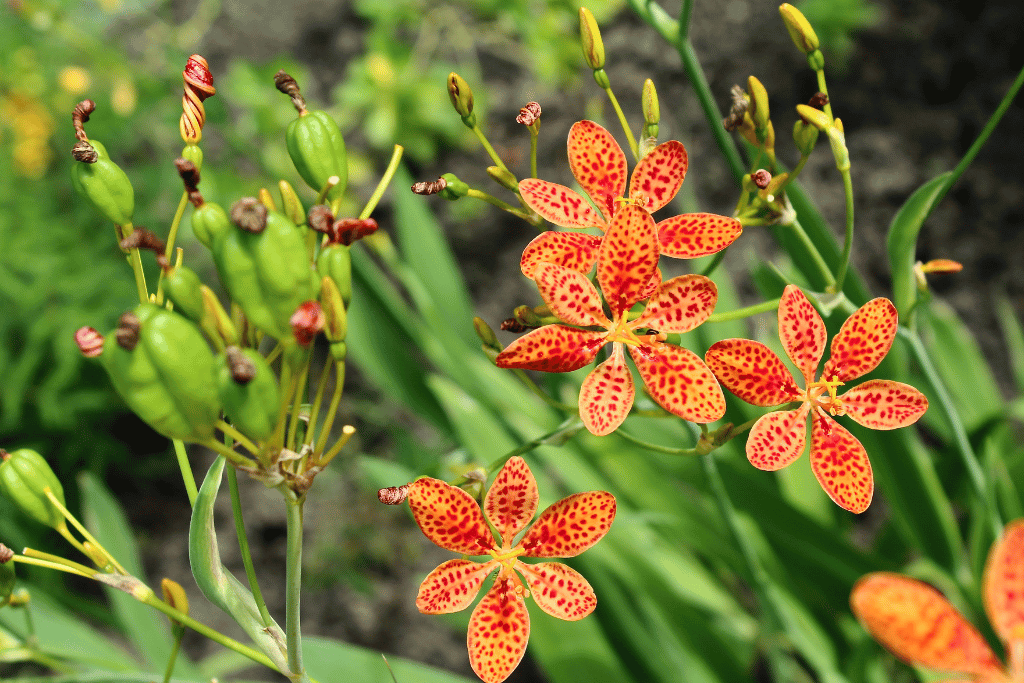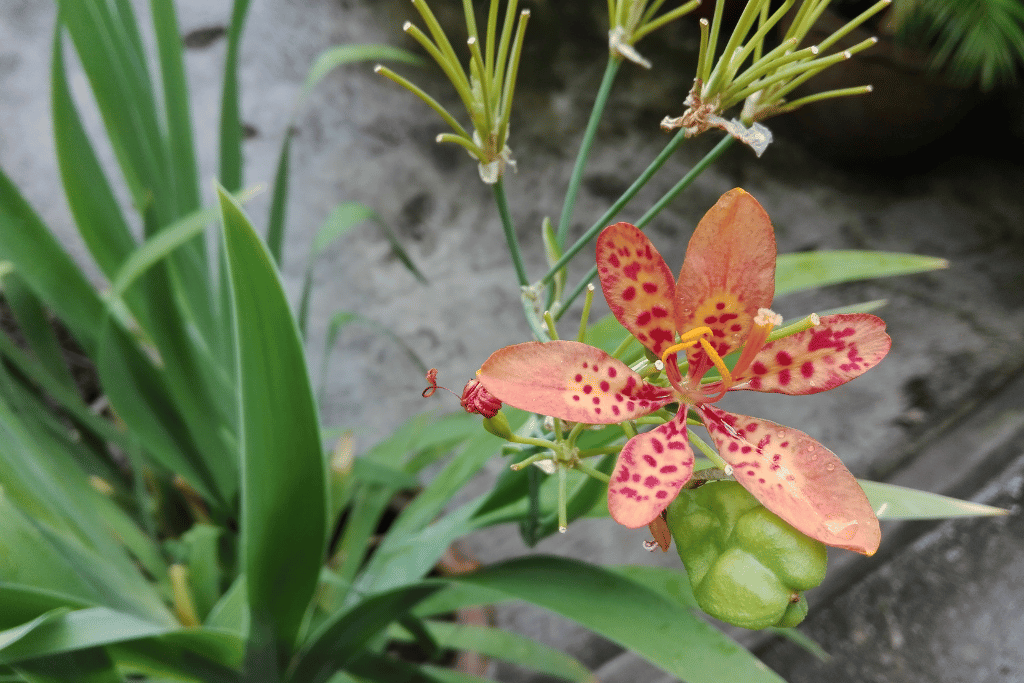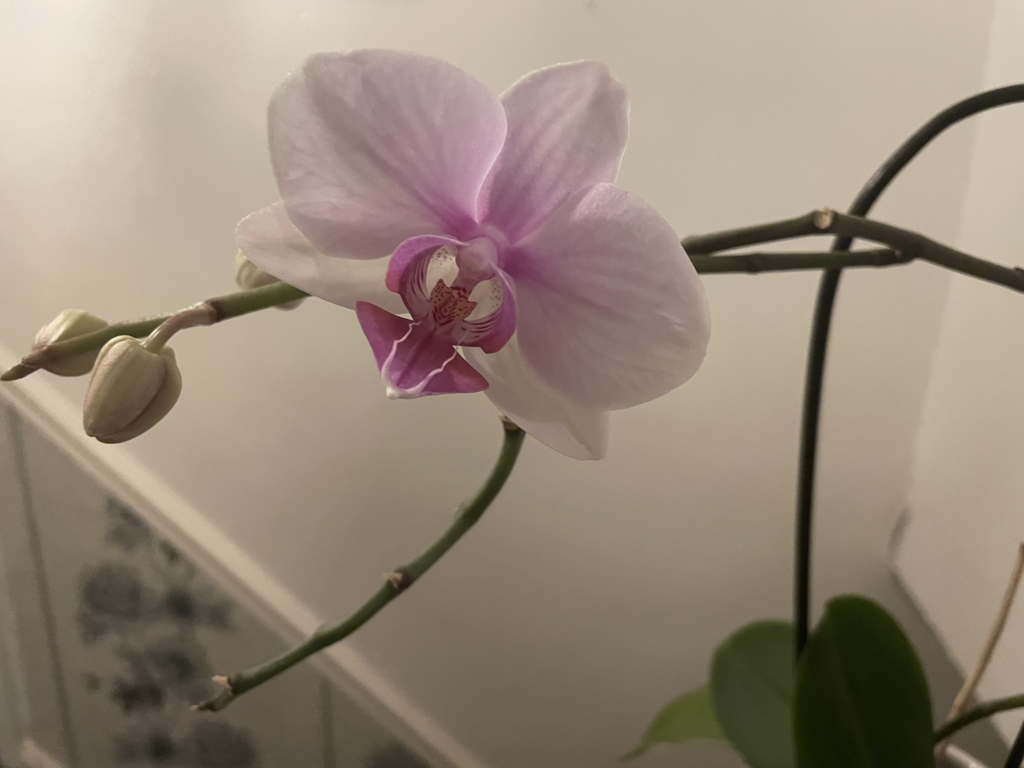
The leopard lily (Iris domestica) is a wild addition to any garden, with its bright, showy flowers and dark, pearl-like seeds. I personally love the bold and tropical feel this species brings to a landscape, with bright pinkish-red or orange flowers sporting multiple spots (hence the “leopard” name), that tower over the narrow basal leaves.
After the flowers fade, the leopard lily will produce seed pods covered with small black dots and filled with clusters of round, black seeds earning it the alternate name of “blackberry lily”. These seeds are sometimes used in traditional Chinese medicine for their healing properties, but should be used with caution as lily species can be highly toxic! Like any plant, fully understanding what this species needs in terms of care is the key to producing a robust, hearty addition to your yard.
Leopard Lily Care
Whether grown indoors or outside in your garden, leopard lilies should be given proper growing conditions and care. Leopard lilies that are stressed, underwatered, and unhappy are unlikely to bloom, leaving you disappointed and unable to fully enjoy the unique beauty of this species. By following the simple guide below, you can be sure to take the best care of your plant!

Watering Requirements
Like most lily species, your leopard lily requires frequent waterings and prefers the soil to be slightly moist. While you should ensure your plant gets plenty of water, be careful of overwatering and allowing your plant to sit in standing water, as this can cause root rot. If you notice your leopard lily leaves drooping it could be caused by both over and under-watering, so be sure to check your soil moisture levels and adjust accordingly.
Soil Needs

Leopard lily indoor plants prefer soil that is well draining and high in organic matter. This might mean the need to add compost, fertilizer, or other organic additives to potted plants to ensure enough nutrients are available for your plant. A soil pH of between 5.5 and 6.5 is ideal for leopard lily and is typical for most indoor house plants.
Sun And Light Exposure
Leopard lilies need full sun to truly thrive, with direct, bright light for the majority of the day (about 6 hours). Although they can tolerate partial shade conditions, they are not an ideal low-light species. Your plant should be in a bright location but protected from temperature extremes, so be careful if placed close to a window. Windows often experience higher temperature changes than other places in your home, getting too cold in the winter and too hot in the summer.

Fertilizer
Leopard lilies will benefit from regular fertilizer applications during the growing season. A balanced, slow-release fertilizer from your local plant store is ideal and should be applied following the package instructions. Be sure to keep an eye out for fertilizer shock and provide plenty of water after application.
Leopard Lily Pruning
Your leopard lily indoor plant doesn’t need regular pruning and will be happy being left alone in this regard. However, it is common for old flowers, seed heads, or dying leaves to be trimmed off to maintain aesthetics. Be sure to use clean, sharp shears to cut off these parts as close to the base as possible. This will protect your plant from pests and diseases that can enter through open wounds.

Is Leopard Lily Toxic to Cats?
Yes! Leopard lily is toxic to cats, along with other plants in the lily family (like peace lily). This is due to the presence of alkaloids, which is harmful to pets when ingested. Symptoms of poisoning include:
- Vomiting
- Diarrhea
- Lethargy and sleepiness
- Decreased appetite
- Stomach cramps and pain
In severe cases, this will lead to kidney failure and even death. If you suspect your pet has ingested part of your plant, contact your vet immediately for recommended treatment. If you have pets be sure to keep these plants out of reach or opt for non-toxic house plants and be aware of other species that can be toxic as well!

Final Thoughts
To sum up, leopard lilies will add a touch of wildness and striking beauty to any garden or plant collection but requires proper care to ensure success. By following the detailed guide above, you can be sure you are taking good care of your leopard lily and will enjoy its distinctive and eye-catching blooms year after year.



